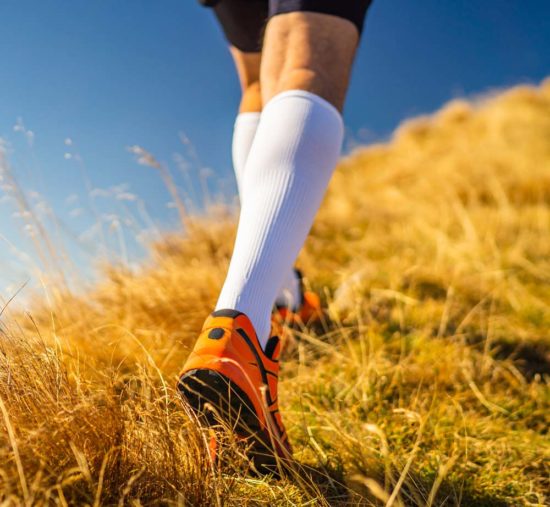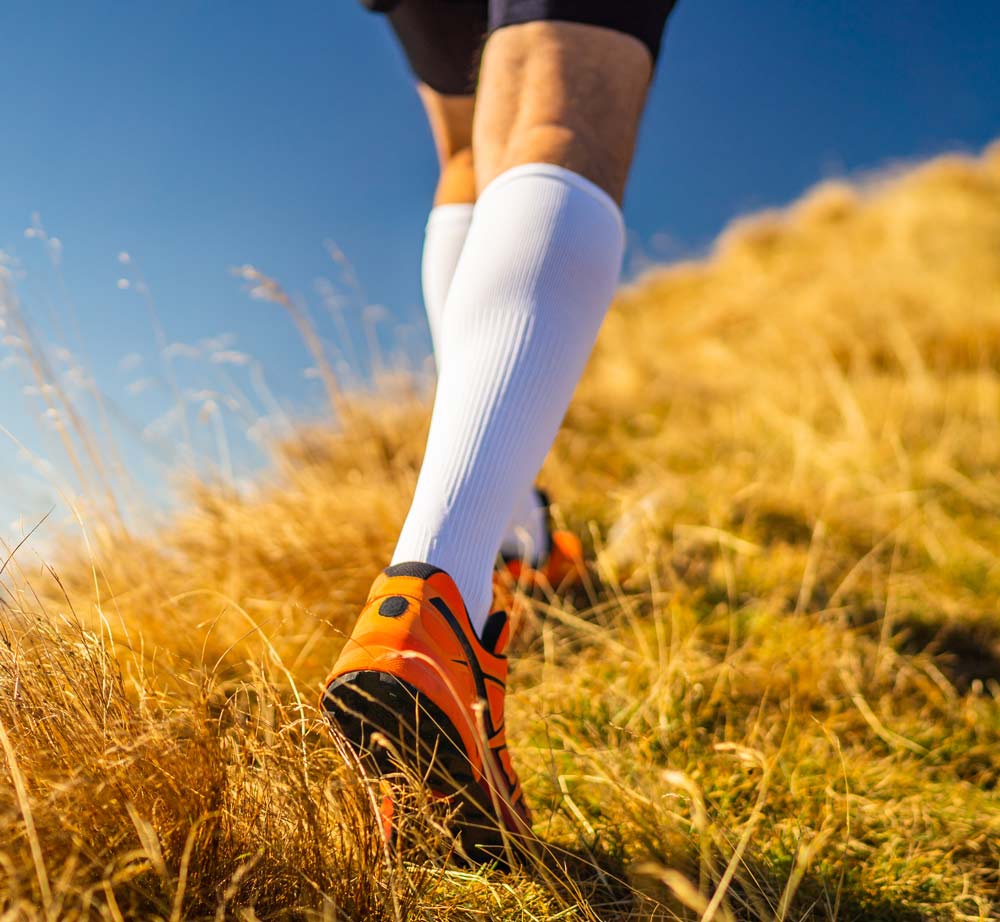
iStockphoto.com #1136215781
Two new studies show the effectiveness of compression stockings (CS) in the settings of diabetes and peripheral arterial disease (PAD) as well as in sport performance.
The first, from Friedrich-Alexander-Universitat Erlangen-Nurnberg in Germany and published in BMJ Open Diabetes Research & Care, looked at the direct effects of compression therapy on skin microcirculation in patients with either diabetes or PAD. Compression therapy has been found to be helpful in leg edema, a common health challenge in both diabetes and PAD populations, particularly as these patients age. Leg edema can cause malnutrition at the microcirculation level leading to hard-to-heal leg ulcers, which can be limb and life-threatening.
In the study, a compression stocking (medi, Bayreuth, Germany) was placed on one of the patient’s legs, using 2 different compression classes (compression class I [CCLI], 18–21 mm Hg; and compression class II [CCLII], 23–32 mm Hg) for at least 3 hours. Microperfusion before, during, and after CS wear was measured using a method called ‘Oxygen-to-see’ (or O2C; LEA Medizintechnik, Giessen, Germany); O2C combines laser Doppler flowmetry and white light tissue spectrometry. Probes were placed on the great toe, the lateral ankle, and the dorsum of the calf. Measures were taken at baseline then with patients in 4 different positions: baseline, before the stocking was donned; supine position; then with affected leg at 65cm elevation; seated; and standing. Final measure was taken after the patient had worn the CCLI stocking for 3 hours. This exact same procedure was then repeated with the CCLII stocking.
The study found no impairment of microperfusion parameters when patients with diabetes or PAD used CS, no matter what body position. Furthermore, the microperfusion changes that occurred with CS use in these patient populations were similar to changes in the healthy subgroup. These findings led the authors to conclude that CS use is safe and feasible in patients with diabetes and PAD.
The second article, a review of 21 publications by researchers from the Institute of Health Sciences at the Federal University of Triângulo Mineiro in Brazil and published in the Open Access Journal of Sports Medicine, looked at the effects of wearing below-knee compression stockings (CS) on exercise or sports performance and related physiological and perceived indicators. Compression ranged from 8mmHg to 40mmHg amongst all the studies, making it difficult to compare between the various protocols.
The potential for performance improvement is based on enhanced physiological effects in several studies. These include better venous return thereby hastening metabolic removal from the worked muscle as well as reducing cardiac load, improved proprioception which helps with more accuracy in movements, reduced muscle oscillations, less muscle damage, reduced levels of inflammation, and reduced soreness, even 24 hours later.
The authors attribute CS-related ergogenic effects to enhanced biomechanical support of the muscles, leading to higher efficiency and lower metabolic costs at given workloads, reduction of muscular microtrauma, and enhanced proprioception. The authors noted that the benefit did not accrue in the initial task, but rather in a later 5 Km run where increased oxygen delivery, lower muscle oscillation, and better running mechanics may be the mechanism of action.
Notably, in 15 of the 21 studies, the authors identified other CS-influenced variables including lower blood lactate levels, lower fibrinolytic activity, increased oxygen saturation, all particularly after the recovery period, as well as lower cardiac stress during the initial protocol itself.
The authors urge caution in interpreting the widely varying findings to broad populations. In particular, they note that one study found no population effect, but cited 1 instance where 10/19 runners ran their 5 Km race nearly 10 seconds faster and another had 10/14 run their 10 Km trial almost 20 seconds faster.
The authors conclude there may be benefits to use of CS in performance improvement and reduction of muscle fatigue and soreness, but future studies need to be of longer duration (ie, weeks not hours). However, they advise sports medicine professionals to consider the individual’s response in conjunction with the placebo/nocebo effect while deciding whether to recommend compression stockings.
Sources:
Rother U, Grussler A, Griesbach C, et al. Safety of medical compression stockings in patients with diabetes mellitus or peripheral arterial disease. BMJ Open Diab Res Care. 2020;8:e001316. doi:10.1136/ bmjdrc-2020-001316.
Mota GR, Simim MAM, Dos Santos IA, Sasaki JE, Marocolo M. Effects of Wearing Compression Stockings on Exercise Performance and Associated Indicators: A Systematic Review. Open Access J Sports Med. 2020;11:29-42.









